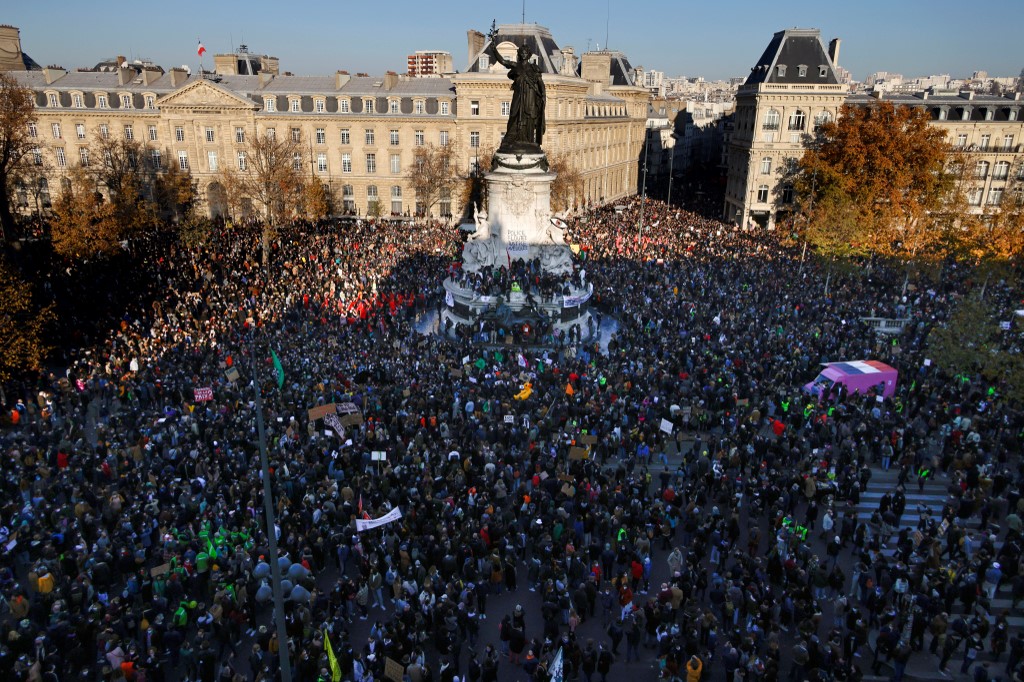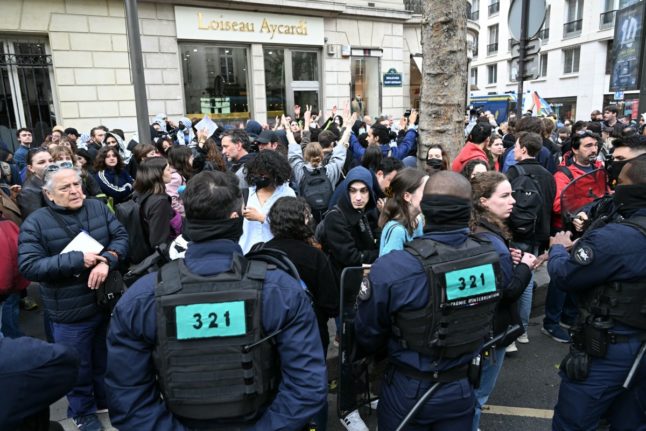When protesters took to the streets of France on January 19th to protest against pension reform, the Interior Ministry said there were 1.2 million people on the streets, including 80,000 at the demo in Paris. The CGT union, on the other hand, counted 2 million people in total and 400,000 on the streets of Paris.
This kind of disagreement is the rule rather than exception in France. For decades, protest organisers and officials have been unable to agree on even a rough ballpark figure for the turnout of protests, strikes and rallies.
It has become so common that reports generally state both numbers – as in the tweet below, which lists 3,500 protesters “selon la CGT” – according to the CGT union – and 2,700 “selon la police” – according to the police – in the small town of Abbeville.
3500 manifestants selon la CGT, 2700 selon la police : c’est simple, c’est la plus grande manifestation de l’histoire d’Abbeville, 22000 habitants, dans la Somme. Rendez-vous vous cet après-midi à Amiens et dans toute la France pour faire plier de gouvernement ! #greve31janvier pic.twitter.com/nKmVtqXPH4
— Picardie debout (@PicardieDebout) January 31, 2023
As protests begin again on Tuesday, turnout will be key in estimating who has ‘won’ the day – the unions who insist that Emmanuel Macron’s pension reforms are unacceptable or the government which is determined to push them through.
Here’s a look at why estimating turnout is so complicated;
1. Because it’s very difficult to count a protest
Counting protesters is of course not an exact science.
This problem was made especially clear during the ‘yellow vest’ protests in 2018/2019. The ‘yellow vests’ were a social movement unlike anything France had seen before. Contrary to the well-established labour unions with a long tradition of organising fastidiously planned street protests, the ‘yellow vests’ were unpredictable. They would begin a protest at different departure times and spots, spread out and crowd together in a sporadic manner, and march so speedily that it was difficult to keep up with them – let alone count them.
But counting any protest is a tricky task, even well-organised or static ones.
“It’s impossible for a human brain to count some hundred, sometimes several thousand people who are on the move in real-time,” Assaël Adary, the president of the independent counting bureau Occurence, told French TV channel BFM in 2019.

2. Because there are different ways of counting
During protests, the interior ministry will publish estimates of the turnout. These numbers have been collected by the police, who count lines of 10 protesters from different geographical points on the protest route, and add them together.
They do this several times and then compare the different estimates, take the average and increase it by 10 percent in order to allow for margin of error. It’s a complicated, old and “very reliable” practice, a police spokesperson told BFM.
Unions, on the other hand, have less resources and therefore have to use different ways of counting. Sometimes they estimate the turnout depending on how many people fit into the streets or how long it takes for a march to go from one point to another.
The independent bureau Occurrence, established by a collective of 80 French media organisation in 2018 to provide an alternative to the numbers provided by the government and activists, uses an automatic method based on images of the protesters and an algorithm. It’s a method similar to those used in airports and museums.
Out of 30 protests, Occurrence’s numbers generally were 15 percent higher than those provided by the police and 250 percent lower than those provided by organisers, according to French daily Le Monde, one of the groups financing the independent bureau.
3. Because numbers are political
Both governments and unions have a vested interest in the numbers – unions derive much of their power from the number of people they can get out on the streets, while any government will have an easier time pushing through reforms if protests are limited.
French authorities are regularly accused of deliberately underestimating the numbers in order to discredit social movements, while police have been said to only count the roads and leaving out the sidewalks to shrink the numbers.
Unions, on the other hand, have been said to knowingly cheat and boost their own numbers to promote their cause.
Occurrence’s data would seem to suggest that authorities are more reliable – but the group itself has been accused of having links to Macron’s La République en Marché and of underestimating its own margin of error.
So what is true?
What we know is that – at least according to the most recent independent study on the topic, published by the EHESS business school back in 2015 – police are the best at counting.
While the police’s method had an “inevitable margin of error” of around 10 percent, it was much more accurate than the one of organisers, which contained “too much of a bias,” the scientists told French media back then.
These findings were backed up in an older attempt by Mediapart, an independent investigative French media, to count a protest in 2010.
Mediapart’s own estimate was much lower to that of the unions, but also lower than that of the police – a finding that surprised the media itself.
As for Occurence, their method has been widely criticised for being imprecise, and the bureau says it continue to work to make up for their margin of error.



 Please whitelist us to continue reading.
Please whitelist us to continue reading.
Member comments